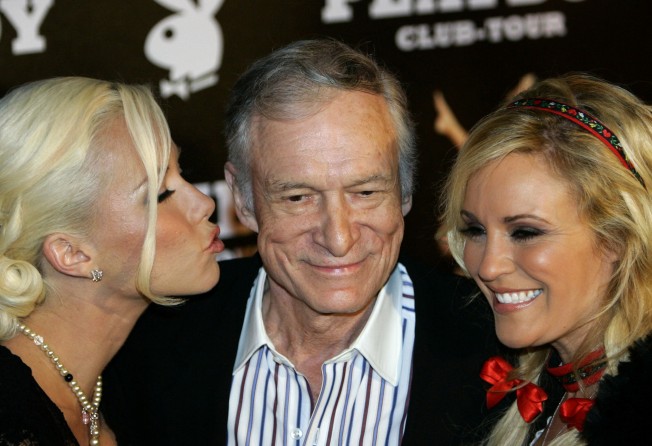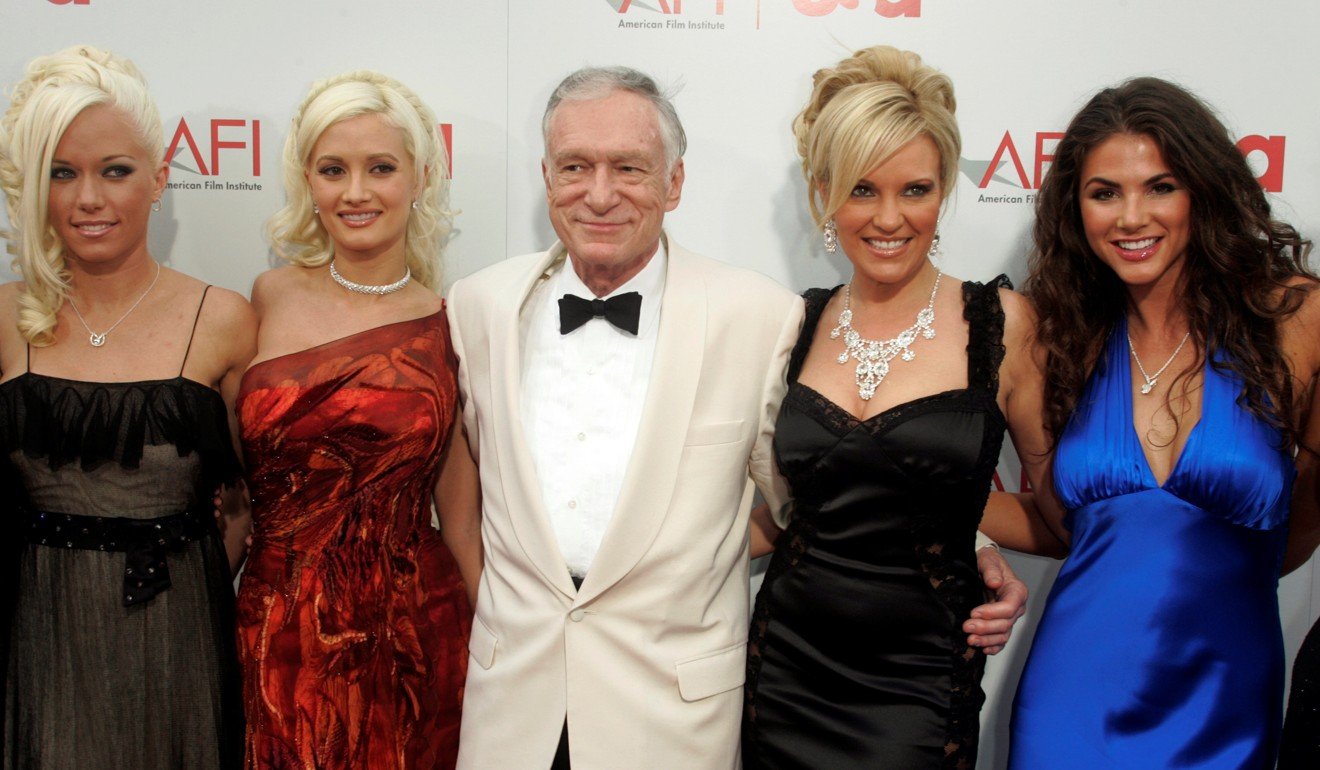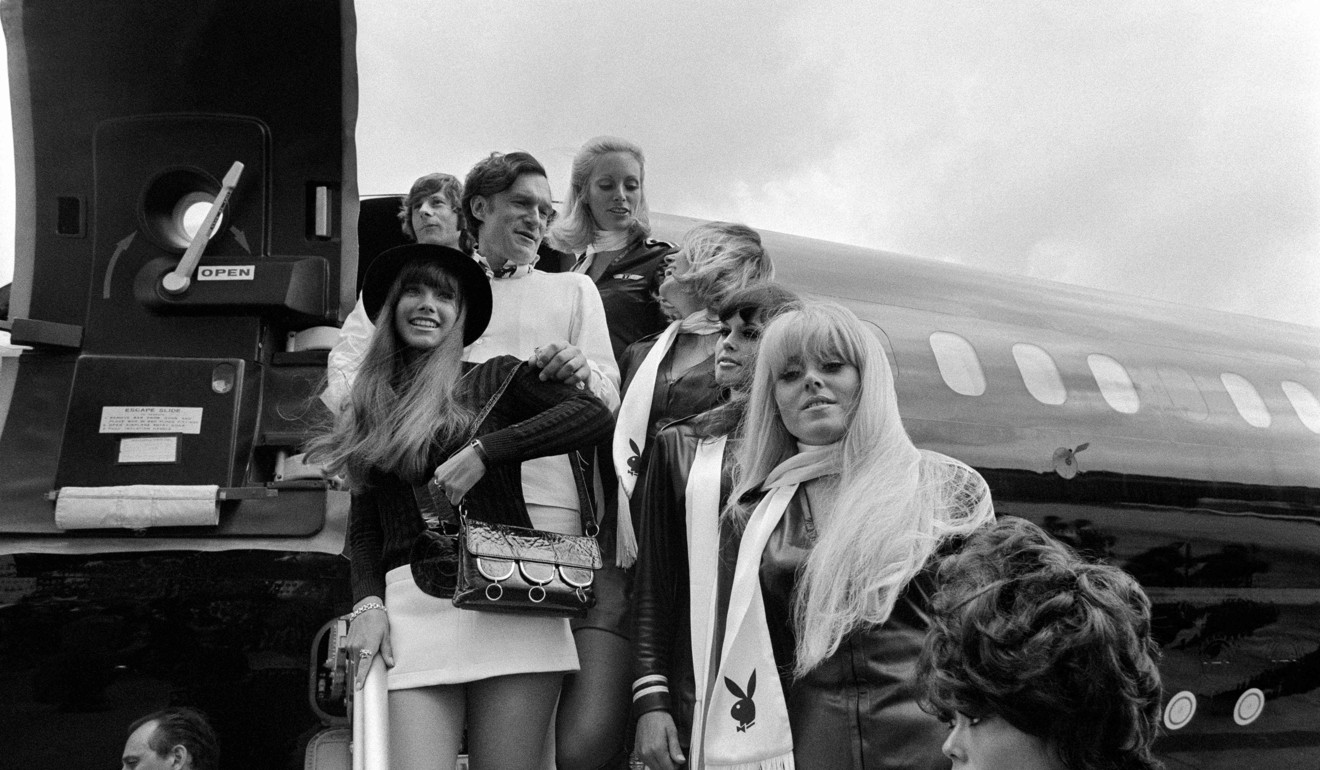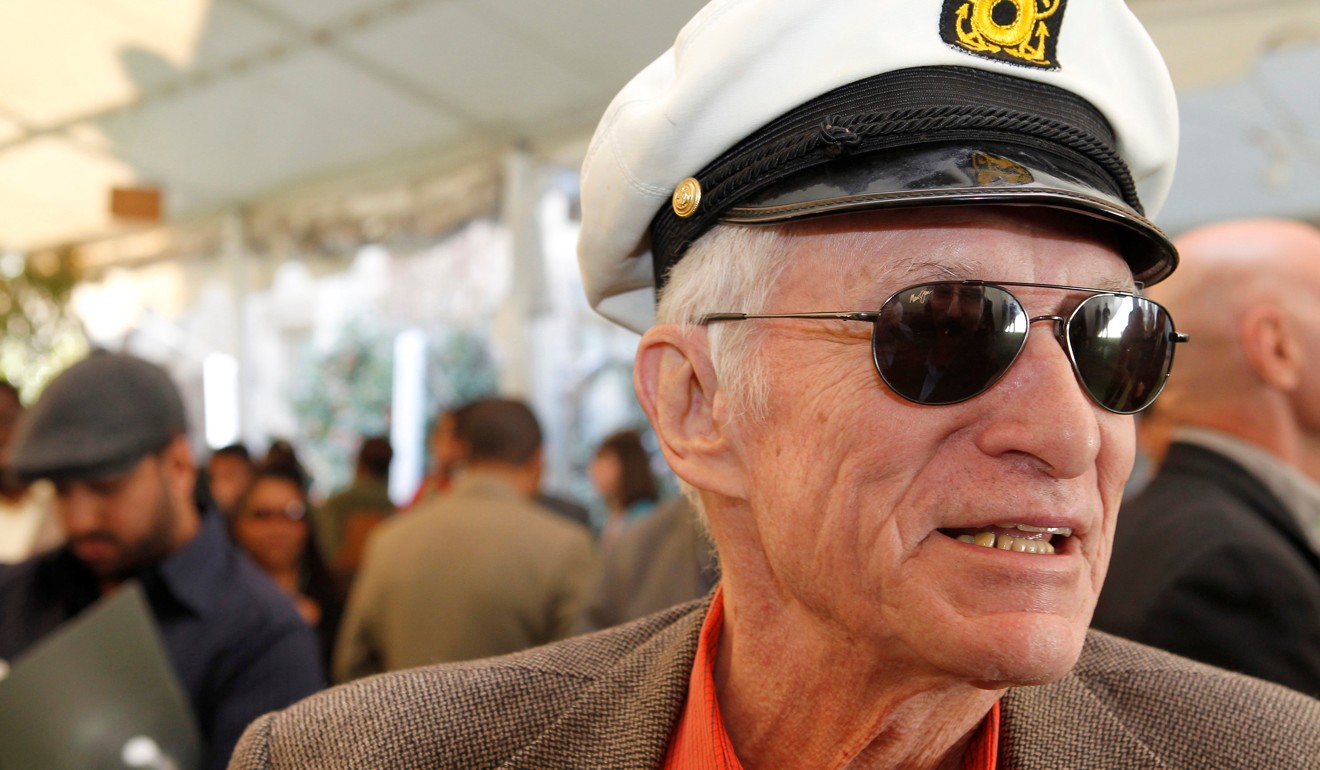
Playboy founder Hugh Hefner, hedonistic symbol of sexual revolution, dead at 91
‘Hef’, who built an empire based on buxom models and the louche lifestyle that he embodied, will be buried next to Marilyn Monroe

Hugh Hefner, the founder of Playboy magazine who turned his swinging lifestyle into a professional calling and taught Americans to be more open about sex, has died. He was 91.
Hefner died from natural causes surrounded by friends and family at his home, the Playboy Mansion, in Los Angeles, according to a post on Playboy’s official Twitter feed and a news release published on PR Newswire. Hefner is to be buried in a crypt he bought next to the grave of Marilyn Monroe in Los Angeles.
Pictures of a nude Monroe catapulted Playboy to success with its first edition in 1953.


The direct descendant of a Puritan who arrived in America on the Mayflower, Hefner shattered traditional attitudes to sex in the 1950s and ’60s with centrefold pictorials of semi-naked women and articles on gender relations. Playboy’s celebration of the female body and redefinition of male pastimes transformed sex from a forbidden topic into dinner-table conversation.
His monthly publication with the rabbit-head trademark and photos of girl-next-door Playmates remained the most popular US men’s magazine for four decades, driving sales for a single issue to 7 million by the early 1970s. He claimed Playboy had a profound effect on American society by advancing the cause of press freedom, racial equality and women’s rights.
“He was perhaps the greatest counter to the Puritan ethic we’ve ever seen,” Garth Jowett, a professor of communications at the University of Houston, said in a 2003 interview in the Houston Chronicle. “One of the greatest social forces in the 20th century in the United States was Playboy magazine.”
“Hef,” as he called himself after unrequited love triggered an image makeover during his college days, became one of America’s most recognised bachelors. He spent much of his adult life with multiple live-in girlfriends, attending to work matters from his mansions in Los Angeles and Chicago.


The pipe-smoking womaniser became a symbol of the 1970s zeitgeist, bedding countless females half his age. In 1968, Hefner met actress Barbi Benton, who would remain his favourite girlfriend for much of the next decade. When Hefner, 42 at the time, asked her for a date, Benton, who was 18, said she had never been out with anyone older than 24.
“That’s all right,” he replied. “Neither have I.”
Dressed in silk pyjamas and a velvet dressing gown, Hefner promoted the single life with magazine tips on fashion, flat living and entertaining. Before Playboy appeared, such topics were excluded from mainstream men’s publications, which focused on leisure activities such as hunting and sports.

Hefner enraged feminists, moralists and family groups alike. He rejected claims that he exploited his Playmates of the Month, such as Pamela Anderson and Anna Nicole Smith, who carved out celebrity careers of their own. A centrefold shoot in the 1950s paid US$500, and a half-century later about US$25,000.
“Playboy exploits sex the way Sports Illustrated exploits sports,” Hefner said on The Dick Cavett Show in the 1970s.

In 2010, he proposed to take the company private by buying the outstanding shares he didn’t already own in order to protect the brand. An investor group led by Hefner completed the buyout the following year.
Hugh Marston Hefner was born April 9, 1926, in Chicago. The elder son of conservative Methodist parents, he was a direct descendant of William Bradford, a Massachusetts Puritan.
After serving as an infantry clerk and army newspaper cartoonist at the end of the second world war, Hefner received a bachelor’s degree in psychology from the University of Illinois at Urbana-Champaign.
He took a semester of graduate courses in sociology at Northwestern University where he studied the findings of Alfred Kinsey, a pioneer in human-sexuality research and the author of the famous Kinsey Reports, two books on sexual behaviour that shocked American society.
We enjoy mixing up cocktails and an hors d’oeuvre or two, putting a little mood music on the phonograph and inviting in a female for a quiet discussion on Picasso, Nietzsche, jazz, sex
After marrying Mildred Williams, a former college classmate, in 1949, Hefner tried his hand at various cartoonist jobs and as a copywriter at Esquire magazine, where he earned US$60 a week. His request for a US$5 pay increase was denied, prompting his decision to start his own magazine.
Originally carrying the working title of Stag Party, it assumed a different name with its famous logo to reflect the “playboy” of the animal world: the rabbit. The magazine’s success was assured when Hefner paid several hundred dollars for some calendar photos of a naked Marilyn Monroe taken in 1949. Four years later, Monroe starred in the Hollywood thriller Niagara, and Playboy’s first edition appeared in December of the same year.
Hefner added a highbrow veneer to the magazine with contributions from authors such as Norman Mailer and Saul Bellow, spawning the joke that some men buy Playboy “just for the articles.” He also introduced regular interviews in 1962, pitching questions to Miles Davis, Fidel Castro, John Lennon and future US President Jimmy Carter.
“I’ve looked on a lot of women with lust,” Carter, the governor of Georgia at the time, said in his famous 1976 Playboy interview. “I’ve committed adultery in my heart many times.”
As Playboy turned into a cultural phenomenon, Hefner promoted his Playboy philosophy as host of a cable-television programme called Playboy’s Penthouse, in his nightclubs and at jazz festivals. Yet the most vivid symbol of the Hefner lifestyle became the Playboy mansions. He spent US$400,000 to renovate a 70-room house he had bought in Chicago in 1959. The property included an indoor pool with a glass side, so that guests could observe others enjoying a nude dip.
In 1971, Playboy Enterprises became a public company and Hefner purchased a 26-room mansion in Los Angeles. The grounds, located in Holmby Hills, included a mini-zoo, waterfalls and the “grotto,” a cavelike aquatic maze with jacuzzis, where visitors could act out their sexual fantasies. He sold the estate for about US$100 million in 2016.
Hefner was married three times, the second time to Kimberley Conrad, a former Playmate with whom he had two sons, Cooper and Marston. The couple separated in 1998 and divorced about a decade later. In 2012, Hefner married 26-year-old Crystal Harris, a former Playmate.
Christie Hefner, his daughter from the first marriage, was chief executive officer of Playboy Enterprises for two decades before announcing her resignation in 2008. Hefner also had a son, David, with his first wife.
Hoping to attract more advertising, Playboy magazine in 2016 stopped showing nudity, a move the company said was “the next step in its brand evolution”. The experiment lasted about one year.
Former Playmates and other stars react to death of ‘Hef’
RIP #Hef Thank you for being a revolutionary and changing so many people's lives, especially mine. I hope I made you proud. #PMOY 94 ️ pic.twitter.com/sF9ARYgEpw
— Jenny McCarthy (@JennyMcCarthy) September 28, 2017
RIP to the legendary Hugh Hefner! I’m so honored to have been a part of the Playboy team! You will be greatly missed! Love you Hef! Xoxo
— Kim Kardashian West (@KimKardashian) September 28, 2017
I had a number of great conversations and with Hugh Hefner. Was such an interesting man. True legend. What an end of an era!
— Rob Lowe (@RobLowe) September 28, 2017
Hugh Hefner was a GIANT in publishing, journalism, free speech & civil rights. He was a true original, and he was my friend. Rest well Hef. pic.twitter.com/bJ1wxoK4gR
— Larry King (@kingsthings) September 28, 2017
Hugh Hefner put me in Playboy & ignited my career. I am forever indebted, Hef. You will forever live on as an icon of epic proportions. #RIP
— Donna D'Errico (@DonnaDErrico) September 28, 2017
One of the nicest men I've ever known. Godspeed, Hugh Hefner. pic.twitter.com/457cchqskO
— Nancy Sinatra (@NancySinatra) September 28, 2017
So sad to hear the news about @HughHefner. #RIPHef pic.twitter.com/IQiEYhMfvf
— Paris Hilton (@ParisHilton) September 28, 2017